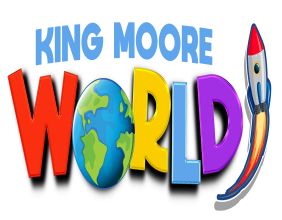BROOKLYN, NY, USA, March 5, 2024 /EINPresswire.com/ -- The global sanitary napkin market size reached US$ 27.0 Billion in 2023. Looking forward, IMARC Group expects the market to reach US$ 37.9 Billion by 2032, exhibiting a growth rate (CAGR) of 3.6% during 2024-2032.
The Global Sanitary Napkins Market: Insights and Trends
The sanitary napkins industry is pivotal in catering to the fundamental hygiene necessities of women globally, showcasing considerable growth and innovation, fueled by an enhanced emphasis on women's health and hygiene. The sector has broadened to include a variety of products, mirroring the societal shift towards sustainability and inclusivity. Noteworthy innovations feature eco-friendly, biodegradable options and technologically enhanced napkins aimed at boosting user comfort and convenience, reflecting the industry’s dedication to advancing women's health and reducing environmental footprints. The market's growth and variety emphasize the increasing acknowledgment of menstrual health as an integral component of women’s healthcare, propelling the demand for products that are effective, environmentally considerate, and universally accessible. This progression represents a significant step forward in addressing the complex needs and preferences of women worldwide, affirming the vital role of menstrual hygiene in promoting overall health and well-being.
Market Overview
The international sanitary napkins market is vibrant and multifaceted, catering to a broad array of consumer requirements worldwide. It presents an extensive range of products, encompassing everything from ultra-thin liners suitable for light flows to maxi pads for heavier periods, offering varied choices in size, material, and absorbency levels. This sector benefits from the contributions of established health and hygiene brands as well as the fresh perspectives brought by innovative startups, which are redefining product innovation with offerings that focus on comfort, health, and eco-friendliness, including organic, hypoallergenic, and biodegradable varieties. The growth of this market is significantly influenced by regulatory backing and societal efforts aimed at breaking menstrual stigmas and enhancing menstrual health education, which have been instrumental in making sanitary products more accessible to diverse populations. Consequently, the market is witnessing expansion, fueled by heightened consumer demand for sanitary napkins that are effective yet also resonate with contemporary values of wellness, environmental responsibility, and inclusivity. This ongoing evolution and innovation within the industry underscore its dedication to meeting the menstrual requirements of women globally, promoting broader and more inclusive conversations about menstrual health.
Request to Get the Sample Report: https://www.imarcgroup.com/sanitary-napkin-market/requestsample
Market Growth
The sanitary napkins market is experiencing robust growth, propelled by a global increase in awareness surrounding menstrual health and hygiene. This heightened awareness, coupled with economic advancements in emerging markets, has significantly improved access to menstrual hygiene products, thereby expanding the market's reach. Governments across the globe have also played a pivotal role in this expansion, implementing initiatives to distribute sanitary napkins either free of charge or at a subsidized rate. Such programs have been instrumental in enhancing product penetration, especially in regions where access to menstrual hygiene products has historically been limited. Parallel to these developments, there's a growing consumer shift towards environmentally friendly and organic options within the menstrual hygiene space. This trend reflects a broader societal move towards sustainability, with consumers actively seeking out products that align with eco-conscious values. The demand for sanitary napkins made from biodegradable materials or those free from chemicals and synthetic fibers is on the rise, opening new pathways for growth within the market. Manufacturers are responding by innovating and expanding their product lines to include sustainable options, catering to this growing segment of environmentally aware consumers. This focus on sustainability, alongside efforts to improve accessibility and awareness, is driving the sanitary napkins market towards continued expansion and diversification.
Market Drivers
The expansion of the sanitary napkins market is driven by several key factors, with a notable one being the worldwide increase in the female population and evolving societal norms regarding menstrual health, which are eroding long-standing stigmas around menstruation. This transformation is fostering more open conversations and boosting the demand for menstrual hygiene products. Educational initiatives and menstrual hygiene management (MHM) schemes are pivotal in raising awareness about the significance of proper menstrual care, thus enhancing the availability and utilization of sanitary napkins. These programs, frequently backed by governments, non-profits, and private sectors, have significantly contributed to normalizing menstruation and advancing health and hygiene practices among the global female population. Moreover, there's a rising consumer trend towards organic and eco-friendly products, motivated by health and environmental considerations, leading to innovative developments in the sanitary napkins industry. This inclination has brought forth a variety of products, including those made from organic cotton and biodegradable materials, appealing to a demographic that values sustainability and wellness. The market's growth is further bolstered by the proliferation of e-commerce and improved distribution networks, making sanitary napkins more accessible to consumers everywhere.
Sanitary Napkin Market Report Segmentation:
By Type:
• Menstrual Pad
• Pantyliner
By Distribution Channel:
• Supermarkets and Hypermarkets
• Pharmacies
• Convenience Stores
• Online
• Specialty Stores
• Others
Regional Insights:
• North America
• Europe
• Asia Pacific
• Latin America
• Middle East and Africa
Market Forecast
The sanitary napkins market is poised for continued growth and significant expansion by 2025, buoyed by a combination of factors that cater to an increasing global demand for menstrual hygiene products. Innovations within the market, particularly those that enhance product efficacy, comfort, and environmental sustainability, are expected to drive this growth. The introduction of new materials, technology-integrated products, and improved designs will likely attract a broader consumer base, eager for advanced menstrual care solutions. Increased accessibility, fueled by the expansion of distribution networks and the proliferation of e-commerce platforms, will further facilitate market growth, making sanitary napkins more available to women in remote and underserved regions. Moreover, heightened awareness and education regarding menstrual health, propelled by public health campaigns and global initiatives, will continue to break down societal taboos and promote the widespread adoption of sanitary napkins. Emerging markets in Asia, Africa, and Latin America are forecasted to experience particularly robust growth, thanks to improving economic conditions, governmental initiatives aimed at enhancing menstrual hygiene, and a growing focus on women’s health and empowerment. The demand for organic and eco-friendly products is also anticipated to, reflecting a global shift towards sustainability in consumer habits.
Regional Trends
Regional dynamics within the sanitary napkins market reflect the diverse economic, cultural, and social landscapes across the globe. In developed regions like North America and Europe, the market is characterized by a high degree of innovation and a wide array of product offerings. These areas have witnessed a notable increase in consumer demand for products that align with environmental and health consciousness, including organic, reusable, and biodegradable sanitary napkins. Such preferences underscore a broader societal shift towards sustainability and wellness, driving manufacturers to continually innovate and expand their product lines to meet these evolving consumer demands. Conversely, emerging economies across the Asia-Pacific and Africa regions are experiencing significant growth in the sanitary napkins market, fueled by increasing awareness of menstrual hygiene and robust government initiatives aimed at promoting access to menstrual care products. These efforts are pivotal in overcoming cultural stigmas and economic barriers that have historically limited access to sanitary napkins. Latin America is also witnessing promising growth, catalyzed by cultural shifts and efforts to improve the availability of menstrual hygiene products, even in the most remote areas. This growth is indicative of a broader trend towards acknowledging and addressing menstrual health as a critical component of women's healthcare, paving the way for increased market penetration and product adoption.
Competitive Landscape with Key Players:
The competitive landscape of the global sanitary napkin market has been studied in the report with the detailed profiles of the key players operating in the market.:
• Procter & Gamble
• Kimberly-Clark Corporation
• Hengan International Group Company Limited
• Edgewell Personal Care Company
• Kao Corporation
Challenges and Opportunities
The sanitary napkins market, while flourishing, confronts several challenges that also unveil opportunities for meaningful innovation and expansion. Environmental concerns stand out, particularly regarding the disposal of non-biodegradable sanitary napkins, which contribute significantly to global waste. This challenge has catalyzed a shift towards sustainable solutions, with a rising demand for eco-friendly products such as biodegradable and reusable sanitary napkins. This demand not only opens new avenues for market growth but also aligns with the increasing consumer preference for environmentally responsible products, offering companies a chance to differentiate themselves and capture a growing segment of the market. Moreover, menstrual poverty remains a pressing issue in various regions, where access to menstrual hygiene products is limited by socio-economic barriers. This challenge has stimulated the emergence of social enterprises and technological innovations aimed at enhancing accessibility and affordability. Initiatives that leverage mobile technology for distribution, subscription models for regular supply, and community programs for education and free distribution are creating pathways to address menstrual poverty effectively. These efforts not only contribute to market expansion by reaching underserved populations but also offer the potential for significant social impact, improving health outcomes and empowering women and girls worldwide.
Speak to An Analyst: https://www.imarcgroup.com/request?type=report&id=825&flag=C
Innovations and Trends
The sanitary napkins industry is undergoing transformative changes, aligning with modern consumer preferences for sustainability, comfort, and health, demonstrating the sector's agility in meeting current needs. There's a notable gravitation towards environmentally friendly products, such as biodegradable and organic napkins, mirroring increased environmental consciousness and a preference for body-safe products. This shift underscores the industry's dedication to minimizing menstrual waste and catering to the eco-aware consumer.
Additionally, the advent of smart technology in sanitary napkins is a revolutionary development, offering functionalities like leakage alerts and health tracking, providing users with enhanced confidence and valuable menstrual health insights. Personalization is also gaining traction, with products increasingly designed to cater to the unique preferences and requirements of individuals, reflecting a wider industry trend towards inclusivity and ensuring diverse menstrual needs are addressed. These advancements are reshaping the sanitary napkins market, enriching user experiences by making products more eco-friendly, comfortable, and attuned to health considerations. As the industry progresses, these trends are anticipated to propel ongoing growth, fulfilling the contemporary consumer's desire for products that resonate with their ethical standards and lifestyle choices.
Key Highlights of the Report:
• Market Performance (2018-2023)
• Market Outlook (2024-2032)
• Market Trends
• Market Drivers and Success Factors
• Impact of COVID-19
• Value Chain Analysis
• Comprehensive mapping of the competitive landscape
If you need specific information that is not currently within the scope of the report, we will provide it to you as a part of the customization.
About Us
IMARC Group is a leading market research company that offers management strategy and market research worldwide. We partner with clients in all sectors and regions to identify their highest-value opportunities, address their most critical challenges, and transform their businesses.
Our offerings include comprehensive market intelligence in the form of research reports, production cost reports, feasibility studies, and consulting services. Our team, which includes experienced researchers and analysts from various industries, is dedicated to providing high-quality data and insights to our clientele, ranging from small and medium businesses to Fortune 1000 corporations.
IMARC’s information products include major market, scientific, economic and technological developments for business leaders in biotechnology, advanced materials, pharmaceuticals, food and beverage, travel and tourism, and nanotechnology industries. We also provide cost model and manufacturing setup project reports through Syndicated Analytics, a subsidiary of IMARC Group.
Elena Anderson
IMARC Services Private Limited
+1 631-791-1145
email us here
![]()




